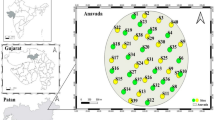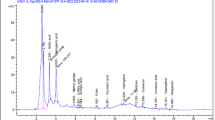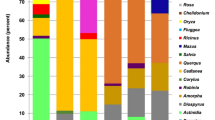Abstract
THE mandibular gland secretion of the worker honeybee, Apis mellifera L., contains 10-hydroxy-Δ2-decenoic acid1 and, at least in older workers (foragers), 2-heptanone2. Maschwitz3 reported that the secretion of this gland evoked an aggressive reaction from bees at the entrance of their hive, and Shearer and Boch2 obtained a similar reaction with 2-heptanone. Simpson4 found that the mandibular gland secretion, which has a strong but fugitive smell, repels foraging honeybees when added to a dish of sucrose syrup. I have shown that 10-hydroxy-decenoic acid does not repel foraging honeybees but that 2-heptanone does.
This is a preview of subscription content, access via your institution
Access options
Subscribe to this journal
Receive 51 print issues and online access
$199.00 per year
only $3.90 per issue
Buy this article
- Purchase on SpringerLink
- Instant access to full article PDF
Prices may be subject to local taxes which are calculated during checkout
Similar content being viewed by others
References
Callow, R. K., Johnston, N. C., and Simpson, J., Experientia, 15, 421 (1959).
Shearer, D. A., and Boch, R., Nature, 206, 530 (1965).
Maschwitz, U., Z. Vergl. Physiol., 47, 596 (1964).
Simpson, J., Nature, 209, 531 (1966).
Author information
Authors and Affiliations
Rights and permissions
About this article
Cite this article
BUTLER, C. Mandibular Gland Pheromone of Worker Honeybees. Nature 212, 530 (1966). https://doi.org/10.1038/212530a0
Issue date:
DOI: https://doi.org/10.1038/212530a0
This article is cited by
-
Choosing the best: honeybee workers can assess reproductive quality of the queen through pheromonal signalling in simultaneous choice assays
Apidologie (2020)
-
The alerting pheromones of the honeybee
Zeitschrift f�r Vergleichende Physiologie (1968)
-
Sammelbienen markieren versiegte Futterquellen durch Duft
Die Naturwissenschaften (1967)



